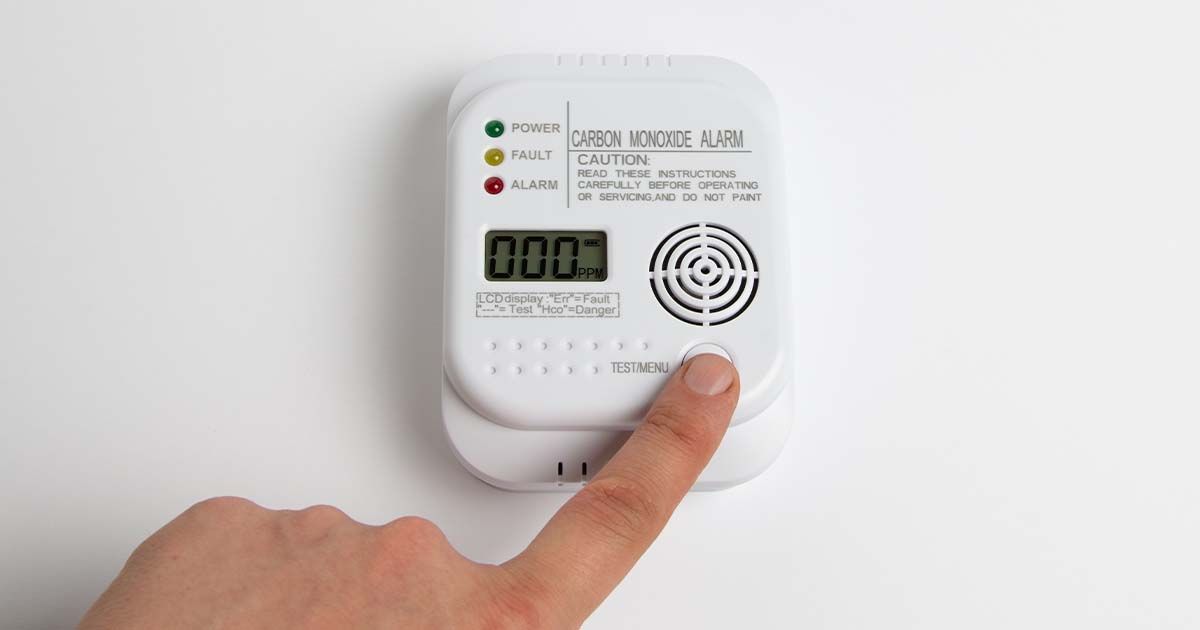
Most people have heard of carbon monoxide and know that it is dangerous – but for many, their knowledge stops there.
So what is carbon monoxide exactly?
Carbon monoxide (CO) is an odourless and colorless gas that presents significant health issues to people exposed to it.
In this blog, we’re talking about carbon monoxide awareness, from how it is produced and its common sources to why it is so dangerous and the signs of a carbon monoxide leak. Of course, we also detail what you should do if carbon monoxide detectors go off in your home – and how to prevent a leak from happening in the first place!
Do not hesitate to reach out for any of your HVAC needs, including carbon monoxide detector installation as well as furnace inspection and repairs. Our experienced team of HVAC technicians is one phone call or email away, so don’t be afraid to reach out.
Carbon monoxide is produced by burning fuels like natural gas, wood, gasoline, charcoal, kerosene, and oil.
Thus, common sources of carbon monoxide in the average home include:
Furnaces, including those run by gas, oil, and coal, can also generate carbon monoxide in the home.
Carbon monoxide is dangerous because of the health problems it can cause when you breathe it in. The first major effect is that CO reduces the ability of your blood to carry oxygen throughout your body.
The symptoms of carbon monoxide poisoning include:
Many of these symptoms can mimic the common cold or flu, which is a major reason why carbon monoxide poisoning is so dangerous: it can go undetected to the point of causing lasting health issues, which include a loss of consciousness as well as death.
Everyone should have a carbon monoxide detector on every floor in their home. While carbon monoxide detectors can be life-saving, it is also crucial for everyone to be aware of the signs there may be a carbon monoxide leak in their home.

Being aware of these signs can help catch a leak early and allow for intervention – which is also life-saving.
Here are 5 signs of a carbon monoxide leak you should be aware of:
The air will often smell weird if there is a carbon monoxide leak in your home. This smell does not stem from the carbon monoxide itself, but rather the other exhaust gases that may be accompanying it. Inside your home, it may smell as if something is burning – a common sign the leak is coming from a gas appliance. The smell of traffic or car exhaust can also indicate a carbon monoxide leak.
If a gas line in your home is leaking, you may notice yellow or brown coloured stains around your gas appliances. The gas lines can leak if they are faulty, were poorly installed, are not receiving regular maintenance, and simply due to regular wear and tear.
When it comes to gas furnaces, this is one of the major reasons to engage in regular furnace maintenance to head off any potential issues before they can result in a harmful carbon monoxide leak in your home.
If one of your gas appliances, including your furnace, uses a pilot light, pay close attention to it. A pilot light that frequently goes out without a clear explanation may indicate there is a carbon monoxide leak present. This is because the light burns off the small amount of carbon monoxide in the air, but if it is frequently out when you turn on your furnace, the gas can build up to dangerous levels.
Gas appliances in the home, including furnaces, must have adequate ventilation. For quite a few homes, this ventilation comes in the form of a chimney. When it comes to identifying a potential carbon monoxide leak, look for increased soot in your chimney around the vents. Increased soot can indicate the ventilation is poor, which can cause carbon monoxide to build up in your home.
Unfortunately, many individuals do not notice there is a carbon monoxide leak in their home until they are experiencing the physical symptoms of carbon monoxide poisoning.
Remember, these symptoms can vary widely but are often classified as flu-like symptoms. If you begin experiencing them without another clear explanation, especially if any of the other signs of a carbon monoxide leak are present in your home, call in a specialist.
If your carbon monoxide detectors happen to start going off, it is crucial to act quickly. In fact, you should have a clear plan in place on what you will do if such a situation arises.
Here are details on the steps you should take if your carbon monoxide detectors go off:
While those are the steps you absolutely must take, there are also a couple things you may want to consider if you have time:
While knowing the signs of a carbon monoxide leak is important, as is what to do if you detectors go off, there is something else to keep in mind: how to prevent carbon monoxide leaks in the first place.
Here are details on 4 of the most important tips to prevent these leaks from occurring:
Every level of your home should have a carbon monoxide detector if it does not already. In addition to having these professionally installed, you should also ensure your detectors are inspected regularly – many subscribe to annual inspections as a good standard of practice.
As your furnace can be a potential source of carbon monoxide, you should be sure to schedule an annual furnace inspection from a licensed technician. These appointments help identify necessary maintenance activities, keep the furnace clean, and provide an indicator on when a furnace replacement may be needed.
Backdrafts, often the result of negative pressure (such as by two appliances being close together and a fan running at the same time) can be a source of carbon monoxide leaks. Thus, preventing a leak because of a backdraft means stopping the backdraft from occurring in the first place.
The solution, however, varies – and often merits calling a professional for an evaluation. However, options include creating a room with both high and low ventilation as well as replacing an old furnace with a new one, specifically a sealed combustion model.
Inspect your vents, including the vent pipes, regularly to detect potential damage or inefficiency issues. This is also a good time to clean your vents to ensure everything is working properly. If you are unsure about what to look for, or are otherwise not confident about inspecting or cleaning your vents, call an HVAC professional and book an appointment.
When it comes to carbon monoxide awareness and safety, one of the best tools available is an HVAC professional. Licensed HVAC technicians can conduct furnace inspections and repairs, monitor ventilation systems, and similar activities to help reduce the risk of a dangerous carbon monoxide leak occurring. Make sure you have at least an annual inspection and maintenance appointment to keep your systems in top condition.

Do not hesitate to reach out for any of your HVAC needs, including carbon monoxide detector installation as well as furnace inspection and repairs. Our experienced team of HVAC technicians is one phone call or email away, so don’t be afraid to reach out.
